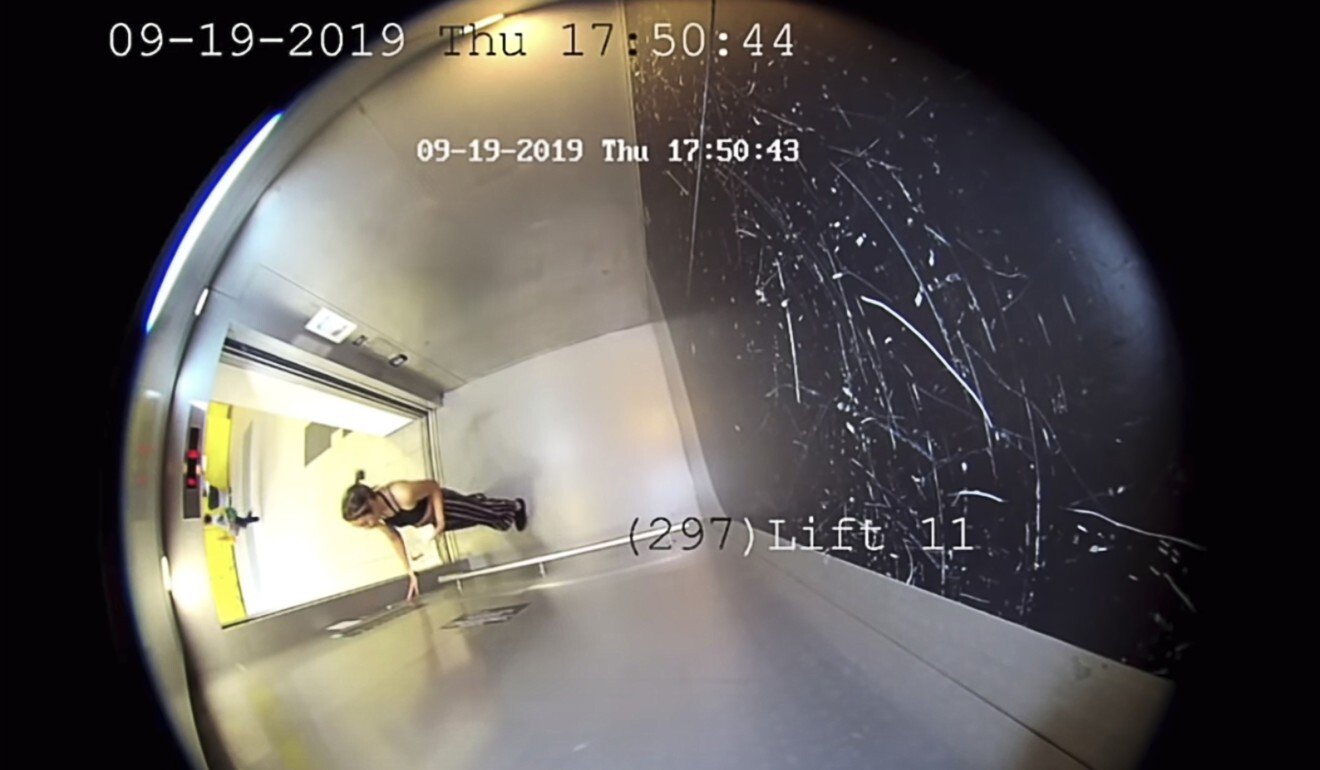
Hong Kong jury returns open verdict on death of teen found at sea after coroner rules out suicide, homicide
- Coroner Ko Wai-hung points to a lack of evidence of assault or threats to Chan Yin-lam, says suicide cannot be established ‘beyond a reasonable doubt’
- Five-member jury unable to determine the cause and circumstances of how she died last September
An inquest jury has reached an open verdict on the death of a 15-year-old girl whose naked body was found in Hong Kong waters last September, unable to determine the cause and circumstances, even as the Coroner’s Court ruled out suicide and homicide.
The five-member jury returned the unanimous verdict on Friday, closing a key chapter in a case that has been the talk of the city after the teenager’s death sparked wild conspiracy theories and unsubstantiated rumours about foul play.
Chan Yin-lam’s body was found in the harbour off Tseung Kwan O on September 22, 2019, three days after she was last seen by friends and her image was caught on security cameras.
While Coroner Ko Wai-hung said that the evidence was insufficient to conclude without reasonable doubt whether Chan had committed suicide or been killed unlawfully, he ordered police to retain one of her mobile phones for a year. The iPhone was locked when found, preventing officers from retrieving any data.
Police should investigate further if they could obtain fresh evidence from the device; otherwise, the phone should be returned to Chan’s mother after that, he said.
In its open verdict, the jury also noted the failure of the Hospital Authority to effectively follow up on cases of teenagers with mental health issues, especially after the 12-day inquest heard suggestions that Chan might have developed psychotic symptoms one month before her death. It urged the authority to establish a mechanism to monitor the mental well-being of adolescents who had received psychiatric consultations at public hospitals.
The jury also suggested that the Department of Health conduct a diatom test – the analysis of microalgae found inside the body of the deceased to determine whether the person had died before or after entering the water – in cases where the cause of death could not be determined due to decomposition of the body. The court earlier heard that such a test had not been carried out in Chan’s case.
In directing the jury, Ko suggested considering the probability of an accidental death.

“In the present case, there was no evidence to show Yin-lam had been assaulted before her death, or that she bore grudges or had disputes with anyone, or was under the threat of personal injury or the influence of medicine or drugs,” Ko said, rejecting theories that Chan had been intoxicated with an unidentified drug.
However, the jury said after four hours of deliberation that it could determine neither the cause of the teen’s death, due to decomposition of her body, nor the circumstances because of insufficient evidence.
The jury concluded that Chan had died between the night of September 19 and the following day, and that she was found naked because she entered the water without any clothes on, rather than her clothes being washed away by strong waves.
Jurors could not ascertain the suggestion she had undergone a psychotic episode that night due to the lack of clinical data.
Why Hong Kong is fixated on the death of a teenage girl whose body was found at sea
There was no noticeable reaction from Chan’s mother, Ho Pui-yee, upon hearing the verdict.
“I’m deeply saddened by Chan’s passing,” the coroner told the mother in his closing remarks. “From the evidence, we can see in the final moments of her life she was able to pursue a study she felt interested in. It also appeared she had a very good relationship with her family and friends. Despite occasional quarrels between you and her, she had nevertheless treated you and your family very well.”
Ko also found it “regrettable” that the mother had been harassed outside court after the first day of proceedings by people who hurled abuse at her and disputed whether she was the teen’s next of kin. “I hope the jury’s verdict could at least resolve some doubts shared by the general public, and serve you a fair ruling,” he told her, to which she nodded in reply.

Chan’s death had spawned a series of conspiracy theories, fuelled by social unrest and widespread distrust in the government and police, alleging that she died at the hands of local law enforcement or mainland China due to her involvement in Hong Kong’s protests.
Police have vigorously denied and condemned such rumours, saying there was nothing suspicious about the teenager’s death, and she had not been arrested at protests, sparked in June last year by the now-withdrawn extradition bill.
Chan’s mother had asserted in a television interview before the inquiry began that her daughter had taken her own life.
The 12-day inquest heard the teen was last seen by friends and on security camera footage on September 19, three days after she began school at the Hong Kong Design Institute.

Security footage showed the girl returning to the institute’s campus in Tiu Keng Leng that evening, after having left school with her friends at 1.30pm.
She spent 70 minutes wandering around the campus, before walking barefoot to a shopping centre next to the local MTR station. She was last seen on camera at a nearby housing estate at around 7pm.
Her naked and bloated body was discovered off waters near Devil’s Peak on September 22.
While pathologists who performed the autopsy pointed to drowning as a possible cause of death, they could not carry out further forensic examinations to confirm if that was the case due to the decomposed state of the body.
On Friday, the jury accepted the student’s testimony, but could not verify whether the driver’s claim was true.
The Hospital Authority said it would study the jury’s verdict, while the Department of Health said its forensic pathology division would review protocols in accordance with the latest scientific findings.

